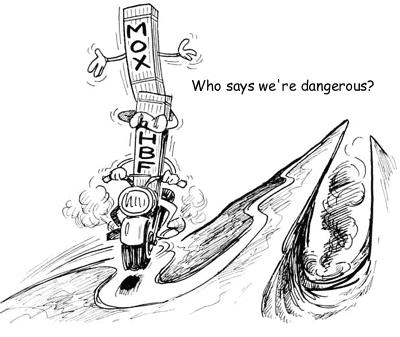News Watch 102 (September/October 2004) Nuke Info Tokyo No. 102
Surprisingly Low Peak DemandHigh Burn-Up Fuel for Ikata Nuclear Power Plant2.7 Billion Yen Apology Money to Suzu City |
||
|
|
||
Surprisingly Low Peak DemandIn Japan an unprecedented heat wave gripped the entire country this summer. On July 20th Tokyo recorded 39.5 degrees Celsius, the highest temperature since observations began. Tokyo Electric Power Company’s (TEPCO) peak power demand for the summer was 61.5 GW. It was, however, not the highest ever. It was only seventh, lower by 2.8 GW than the 64.3 GW recorded on 24 July 2001. TEPCO had estimated that peak demand during an extreme heat wave would be 64.5 GW. In fact, even though the temperature exceeded the estimate, electricity demand was far below what had been predicted. In terms of the total national demand of the ten power companies, 20 July came in top at 174.3 GW, but this figure was still 8.1 GW lower than the 182.4 GW of three years earlier. So in spite of the heat spell and the economic recovery, peak demand did not increase. There were only three days, including 20 July, during this summer period when TEPCO’s peak demand exceeded 60 GW per day. Surprised at this strange state of affairs, TEPCO is said to be analyzing the reasons. Conceivable factors include: a 1.2 GW reduction in demand as a result of progress in deregulation of the electric power industry; lower than usual humidity during these hot spells; the spread of energy-saving appliances; and a greater awareness of energy-saving. Peak demand has been brought under control. That is to be welcomed. However, there is a trend for power consumption at night and on holidays to not been as low as in the past. In terms of peak demand, TEPCO was unable to set a new record, but it sold 26.3 TWh of electric power in July, the highest ever for the month of July. Hokkaido Electric Power Co. saw the extraordinary situation where the highest power consumption in a single day during the summer season was not on a weekday, but on a Saturday (24 July). This may be good news for the power companies, but from an energy-saving viewpoint, new measures are required. |
||
|
|
||
High Burn-Up Fuel for Ikata Nuclear Power PlantOn August 4th and 6th respectively, 44 fuel assemblies (40 of which were Step II high burn-up fuels) were delivered to Ikata-1 (PWR, 566 MW) and 58 fuel assemblies (52 of which were Step II high burn-up fuels) were delivered to Ikata-3 (PWR, 890 MW). (Ikata Nuclear Plant is located in Ikata Town, Ehime Prefecture.) Those delivered on the 4th were from Mitsubishi Nuclear Fuel Co. Ltd.’s main plant in Tokai Village, Ibaragi Prefecture, and those on the 6th were from Nuclear Fuel Industries Ltd.’s Kumatori Plant in Kumatori Town, Osaka Prefecture. Further details of the delivery are not known. The transport itself was done secretly, without informing the local people. The uranium enrichment level of Step II high burn-up fuels is 4.8% (Step I is 4.1% and earlier fuels are 3.4%) and the limit for the highest burn-up is 55.GWd/t (48 GWd/t for Step I and 39 GWd/t for earlier fuels). The Ikata-1 fuels will be loaded during the periodic inspection which began on 5 September. Since the effectiveness of the control equipment is lowered with the introduction of high burn-up fuel, control rods will be increased from 29 to 33 and a tank will be installed to hold the extra boric acid solution that will be needed. Also, the fuel cladding will become more prone to breaking. It is claimed that fuel cladding materials have been improved to cope with this problem. Step II high burn-up fuels are also planned for Kansai Electric Power Company’s Ohi and Kyushu Electric Power Company’s Genkai Nuclear Plants. All of these reactors are PWRs, but high burn-up fuels are also being promoted for BWRs, with Step III fuels (uranium enrichment 4.9%, highest burn-up limit 55 GWd/t) already in use. Also, the pluthermal project is progressing at both Ikata and Genkai nuclear plants. High burn-up fuels and the pluthermal project are different in their aims and details, but in regard to the technical dangers involved they have many things in common. There is a grave concern that when the risks of these two projects are combined, they will become even more dangerous.
|
||
|
|
||
2.7 Billion Yen Apology Money to Suzu CityThree electric power companies, Kansai, Chubu and Hokuriku, announced on August 27th that they would contribute a total of 2.7 billion yen (900 million yen each) to Suzu City, Ishikawa Prefecture, as ‘apology money’ for failing to construct planned nuclear power plants. The donation was announced under the name of a ‘regional promotion fund’. |
||

